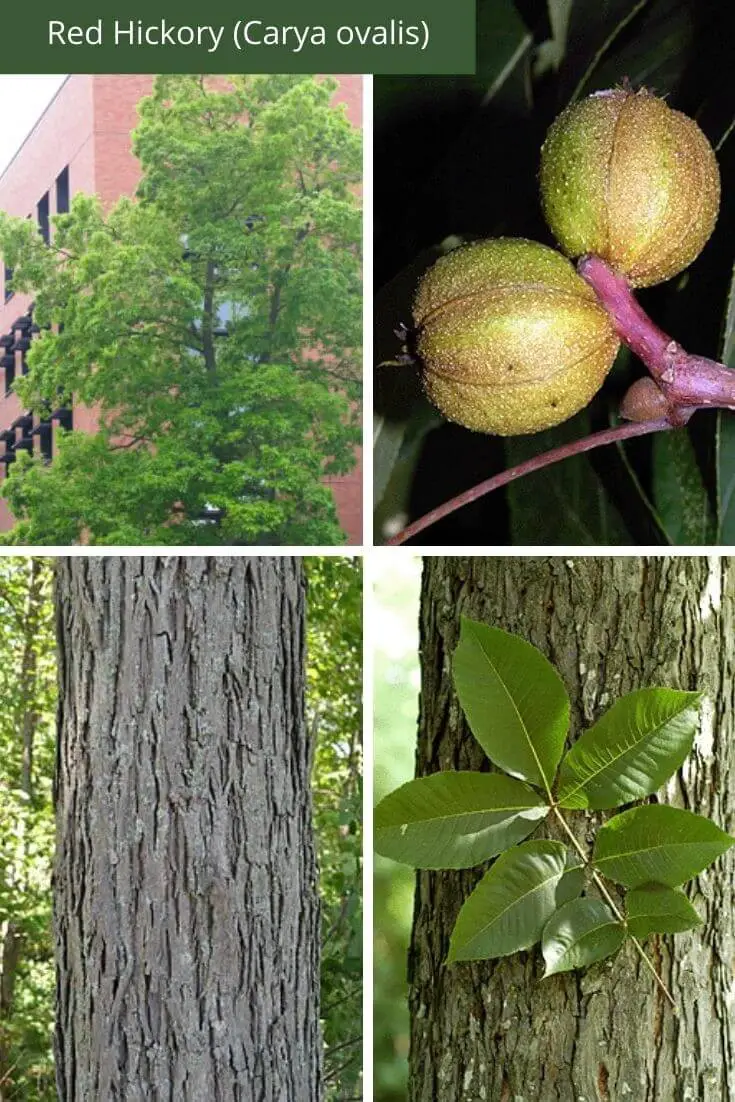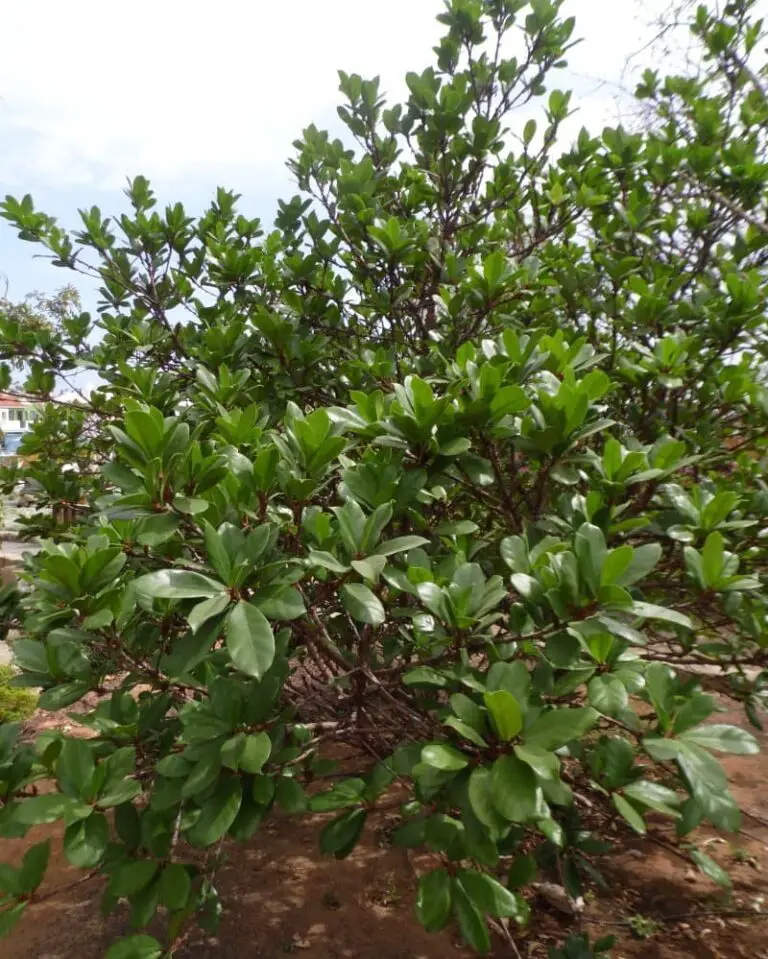18+ Different Types Of Willow Trees With Pictures
The willow tree, a symbol of wisdom and flexibility, has captivated audiences through its drooping branches, as seen in Pocahontas and Lord of the Rings. But few know that there are 400 species of willows, each with its unique characteristics. Beyond their aesthetic appeal, willow trees are also valued for their ability to create live fences, making them a popular choice for landscaping.
If you’re considering incorporating willow trees into your home landscape, this article will provide you with a comprehensive guide on how to care for them and the most popular types to choose from. From the Almond Willow (Salix Triandra) to the Weeping Willow (Salix babylonica), there are many varieties of willows to explore. Each type has its own distinct features, such as the Corkscrew Willow’s twisted branches or the Dappled Willow/Japanese Willow’s striking foliage.
You’ll also learn about the symbolism and identification of willow trees, as well as their growth habits and requirements. Whether you’re a seasoned gardener or just starting out, this article aims to provide a comprehensive overview of all things willow trees, including tips on how to grow and care for them, where they thrive, and what makes them special. With this information, you’ll be well-equipped to decide if a willow tree is the right choice for your yard.
Weeping willow trees facts
Before diving into the various types of willow trees, it’s fascinating to explore some intriguing facts about the weeping willow. For instance, its ‘weeping’ moniker stems not only from its drooping branches but also from the tear-drop shaped raindrops that fall from its leaves. As winter approaches, these deciduous trees shed their foliage and display vibrant colors as the seasons change.
What’s more, their aggressive root system can grow larger than the tree itself, sometimes damaging underground structures like pipes and sewers in the process. Interestingly, the catkins of willow trees are a rich source of nectar, playing a vital role in wildlife conservation and biodiversity efforts. With growth rates reaching an astonishing 10 feet per year, weeping willows are among the fastest-growing trees globally.
Beyond their ornamental value, these versatile trees have also been utilized for centuries in basketry, carving, and even medicine, thanks to their salicin content. Additionally, willow dyes can be extracted and used as a tanning agent for leather, while the tree’s relatively short lifespan of around 30 years adds an air of fragility to its overall significance.
Willow trees symbolism
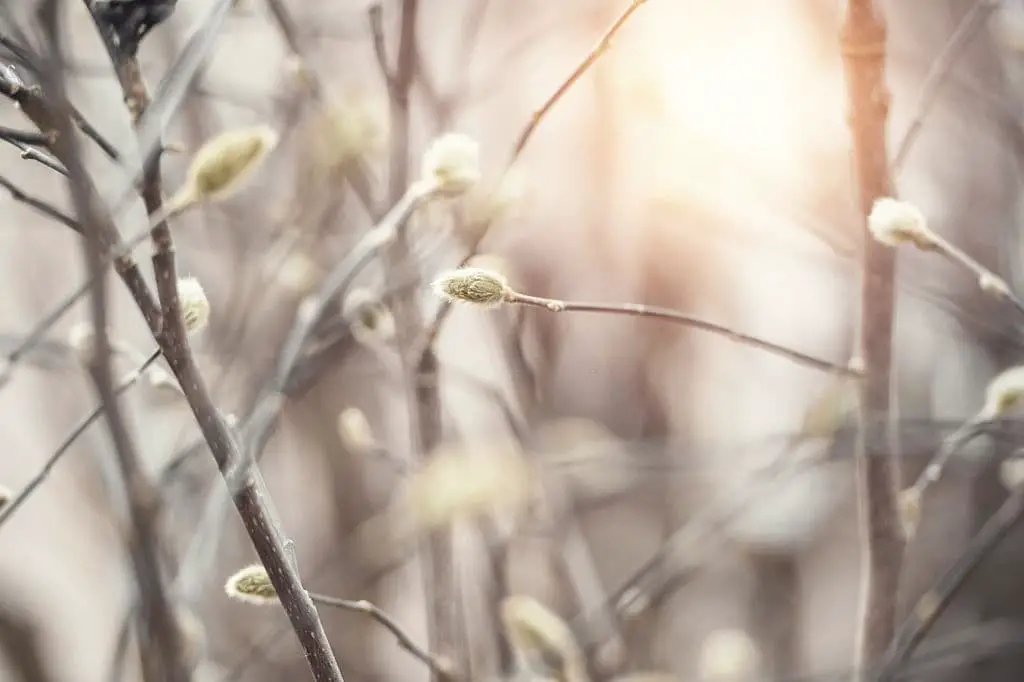
The willow tree’s rich cultural significance is evident in its widespread appearance in folklore, mythology, and historical records from around the world. As a symbolic tree, it has been imbued with various meanings across cultures. In this context, here are some of the most prominent symbols associated with the willow.
Willow trees and shrubs identification
Willow trees can be easily recognized by their characteristic leaf shape and shedding patterns. Their simple, elongated leaves typically feature serrated edges, which turn a range of colors – from light green to dark green, with hints of bluish green and flecks of color – during the fall season. Additionally, willow branches often grow in a drooping manner, exhibiting a soft, brittle, and twisted quality.
To further aid in identification, here are some categories of willows: tree willows, which are large shrubs or mature trees with distinctive lance-shaped leaves; osier willows, also known as basket willows, characterized by their upright branches and long, narrow leaves; and sallows, shorter and low-growing willow shrubs notable for their ovate, rounded leaves.
Types of willow trees
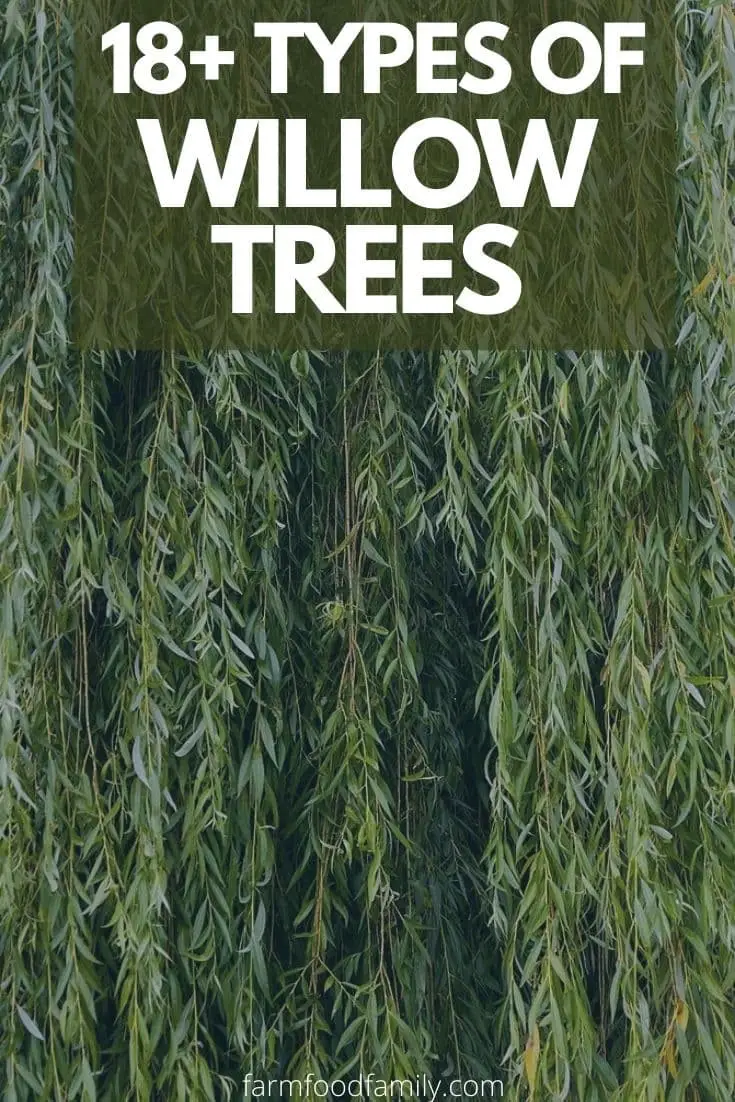
While there are numerous willow tree varieties, several stand out for their unique characteristics and uses. For those seeking more than just decorative purposes from their willow trees, here’s a rundown of notable types that go beyond being mere ornamental plants.
Almond Willow (Salix Triandra)
The Almond Willow’s striking appearance is characterized by its olive to dark green, almond-shaped leaves that emerge alongside yellow catkins during the spring season. Reaching a moderate height of 35ft, this versatile tree is highly valued for its numerous uses. Primarily, it serves as a vital nectar source for honey production. Additionally, its flexible branches are employed in basketry and biofuel applications. The inner bark can be dried and powdered to produce a flour-like substance.
Furthermore, the Almond Willow is an attractive ornamental shrub suitable for hedging and soil erosion control, making it an excellent choice for small landscapes.
American Pussy Willow (Salix discolor)
Pussy willows are often cultivated for their unique properties that make them valuable in floral design and landscaping. One notable characteristic is its ability to grow from a central stem, which can be shaped into intricate topiary forms. Additionally, it’s commonly planted along bodies of water like ponds and riverbanks as a bordering element. This versatile plant thrives between 2-25 feet tall, with a spread of up to 12 feet.
Its striking red branches and small green leaves create a dense, cotton-like appearance in the garden. When the pearl-white catkins emerge, it takes on an even more remarkable form.
Arctic Willow (Salix Arctica)
Arctic willows thrive in inhospitable environments, where rocky outcrops meet heavy snowfall. In fact, this hardy shrub is one of the few woody plants that call the northernmost regions home exclusively. Its diminutive size makes it an ideal choice for creating a striking winter garden on rocky terrain. The plant’s visual appeal stems from its clumps of dark green, glossy leaves and bicolored stems that transition from red to green.
Spring brings forth purplish-red catkins, adding a pop of color to the landscape. Reaching a maximum height of just 5ft, Arctic willows are a compact yet dramatic addition to any winter garden.
Bebb Willow (Salix bebbiana)
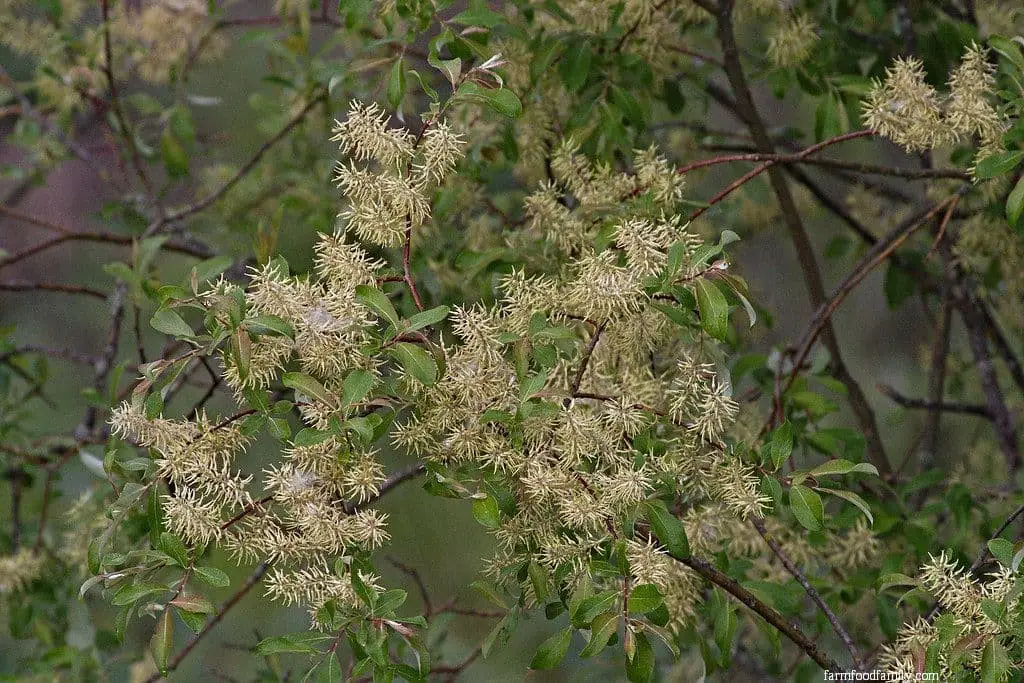
The Bebb Willow thrives in a unique environment, with multiple stems reaching heights of 10-30 feet. Typically found alongside streams, bogs, and lakes, its distinctive features include dull green ovate leaves that are smaller than those of most willow trees. Its twigs also bear distinctive diamond-shaped marks, earning it the nickname ‘diamond willow’.
Despite being prized for carving and woodwork, this species is not often used in landscaping due to its susceptibility to disease and relatively short lifespan. However, once established, the Bebb Willow demonstrates remarkable drought resistance, making it a resilient addition to certain environments.
Brittle Willow (Salix Fragilis)
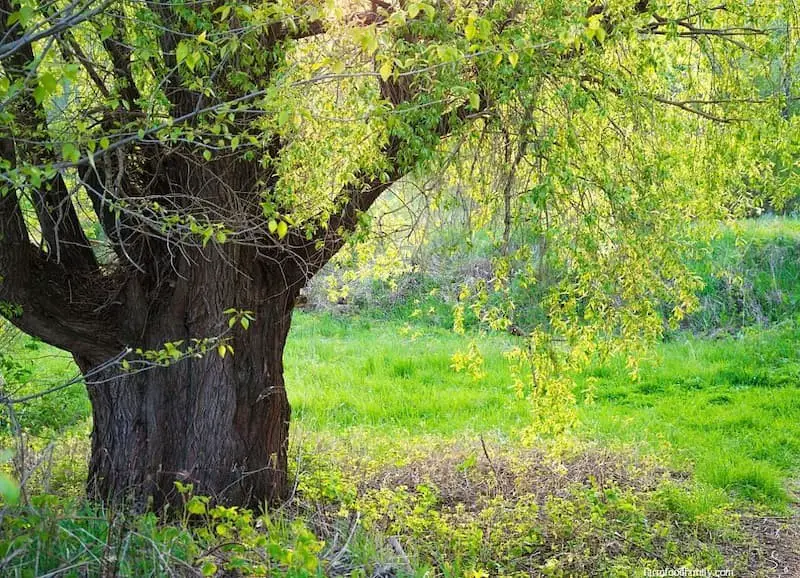
The crack willow, also known as Salix fragilis, gets its name from the distinctive cracking sound produced by falling or breaking branches. While it may be mistaken for the white willow due to its light green, small, and ovate leaves, one key difference is the lack of a hairy underside on this species. In terms of reproductive characteristics, male crack willows produce yellow catkins, while females produce white ones.
The tree itself can grow up to 40ft tall, with twisted branches that cascade in random directions. Native to Europe and Western Asia, it’s a unique sight to behold.
Corkscrew Willow (Salix matsudana Tortuosa)
The Chinese weeping willow family member in question boasts twisted, upright branches that turn dark brown to black, making it a striking addition to winter gardens. Its long, narrow leaves are accompanied by furrowed bark and fuzzy, yellow-green catkins that burst into bloom during the spring season. The plant’s growth habit is characterized by multiple, crooked stems that can reach heights of 20-40ft and provide at least 20ft of shade.
As such, it’s commonly used to create borders but can also be trained to grow low enough for bonsai and floral arrangements. It’s also known as the Scarlet Curls, adding a touch of whimsy to its already attractive profile.
Dappled Willow/Japanese Willow (Salix integra ‘Hakuro-nishiki’)

The Flamingo willow, also known as the Japanese willow, boasts an unmistakable charm with its variegated leaves featuring pink and white flecks arranged in opposites. A notable feature of this shrub is its seasonal transformation – it sheds its colorful foliage in fall before its stems and leaves turn a striking scarlet red hue during winter. This adaptability makes it an ideal choice for borders or focal points in winter gardens.
While most specimens reach around 10ft in height, some cultivars can grow up to 15ft.
Dwarf Willow (Salix herbacea)
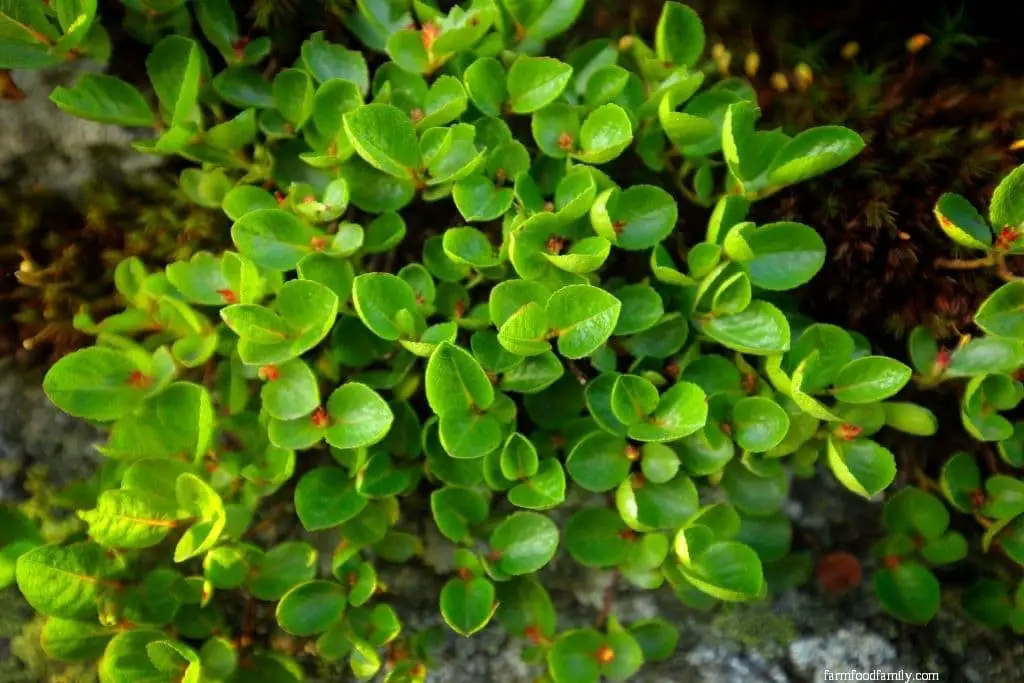
For those seeking the elegant, weeping form of the willow but constrained by compact spaces like patios, balconies, or small gardens, dwarf willow is an ideal choice. Not only does it thrive in a wide range of soils and climates, but its hardiness also sets it apart from other willow varieties. Its distinguishing features include dark green, twisted foliage with a round shape, glossy texture, and finely toothed margins.
The plant’s arching branches are characteristic of willows, although they don’t quite touch the ground. Dwarf willow grows to a maximum height of 5 feet and is also known as the snowbed willow. Male plants produce red catkins, while females produce yellow ones.
Goat Willow (Salix caprea)
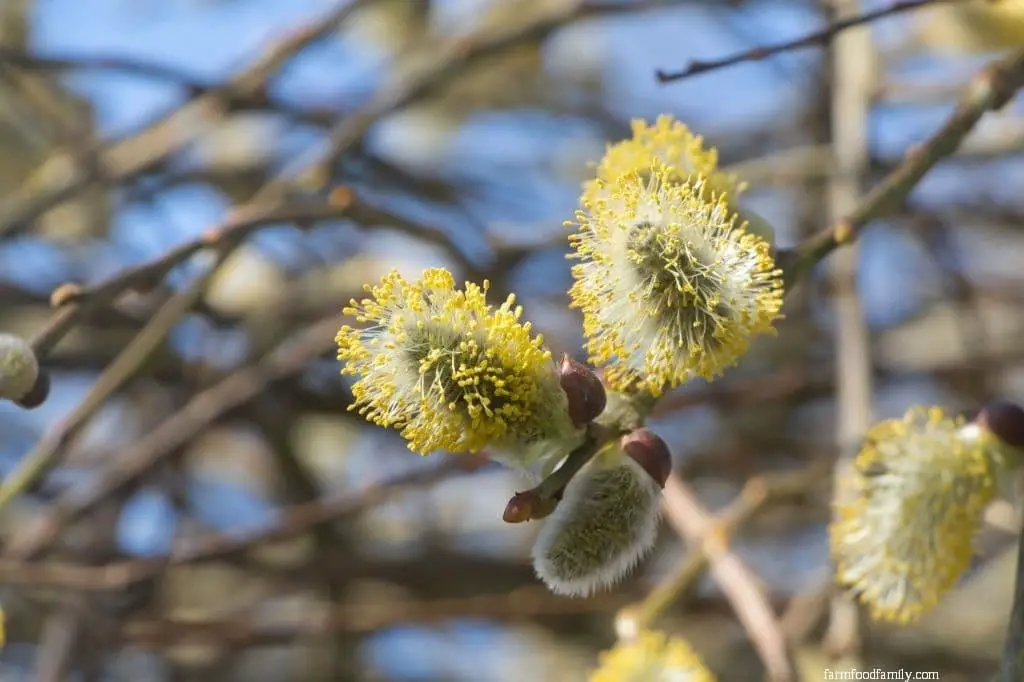
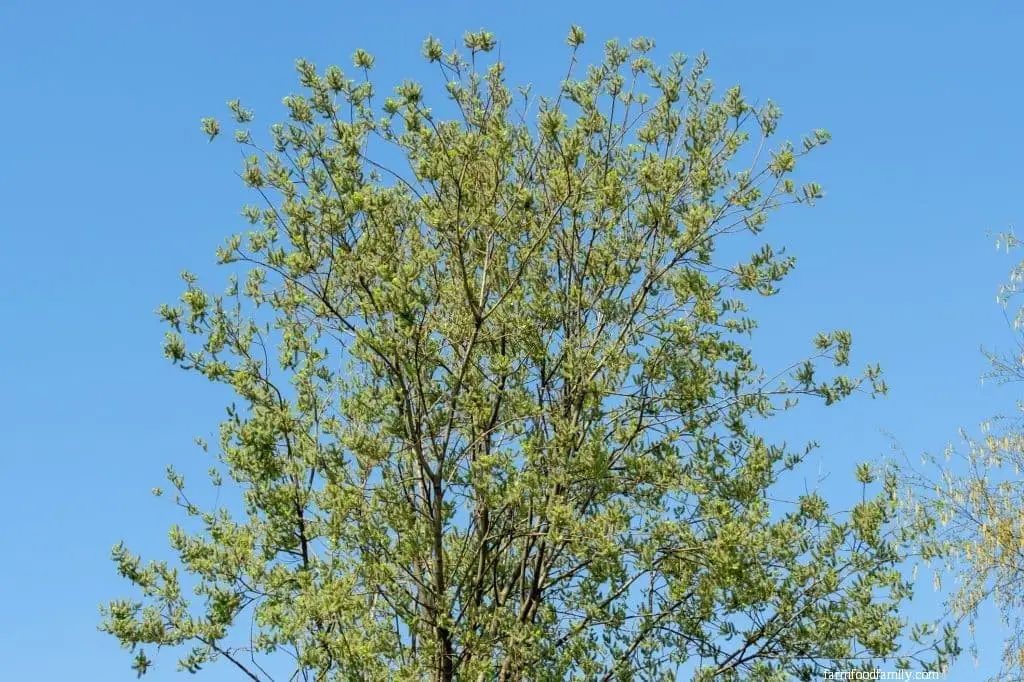
The Goat Willow boasts an array of distinctive features, including its oval-shaped leaves with pointed tips, which boast a dark green color on top and waxy undersides due to their covering of whitish gray hairs. The tree’s bark is also noteworthy for its dark grey-brown hue, while the branches take on a smooth appearance as they mature. In the spring, it produces fuzzy, yellow-green catkins, growing up to 30 feet in height.
This versatile species is often used as a landscape filler, hedge, or shrub. However, propagating the Goat Willow requires a more involved process, namely pollination, which proves more challenging than many other willows that can be easily propagated through cuttings.
Golden Willow (Salix Alba Var. Vitellina ‘Yelverton’)

The hybrid willow, a result of crossing weeping willow and alba, boasts a unique foliage feature – its leaves cascade downwards in a weeping manner. Initially, the foliage presents a dull green hue, gradually transforming into glossy, deep green as the seasons unfold. Winter brings an astonishing visual display as the branches take on a striking yellow, orange, and gold coloration, reminiscent of the biblical burning bush. This remarkable change is where the willow gets its name.
This majestic tree can grow up to 70ft in height, with a canopy that spans around 40ft. Its versatility makes it an excellent choice for hedges, borders, and screens.
Hooker’s Willow (Salix hookeriana)
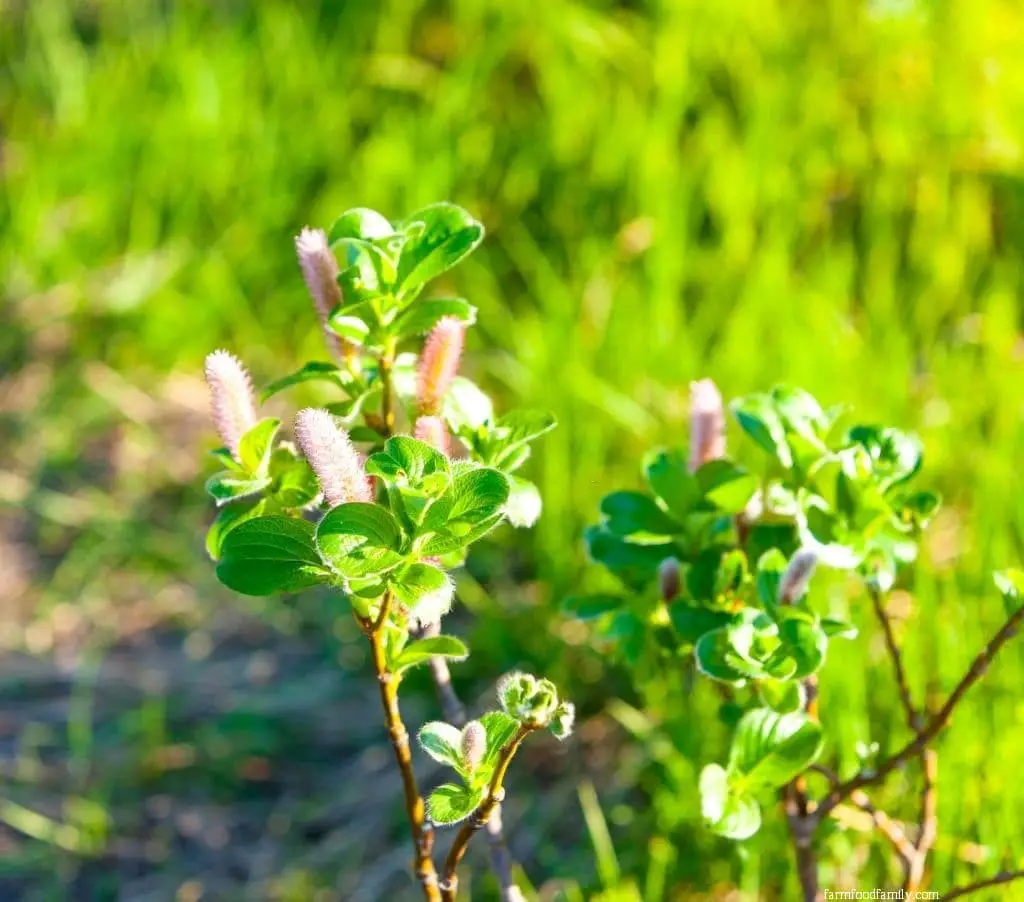
The coastal willow, also known as the dune willow, is a species that thrives in coastal regions. It’s a robust plant that can grow up to 26 feet tall with a bushy habit, producing dense foliage comprised of glossy, oval-shaped leaves that are a deep green hue.
As a member of the pussy willow family, this plant produces white catkins during the spring season. Its range includes canyons and marshes, where it can be found growing in its natural habitat.
Narrowleaf Willow (Salix exigua)
The Salix gooddingii, also known as the coyote or sandbar willow, is a remarkable shrubby willow that boasts narrow, lancing leaves of dark green hue. Its unique features make it an attractive choice for various applications. Despite its modest height of up to 15 feet, this versatile plant has been used in producing flexible wood poles for construction and crafting rustic design furniture.
The tree’s distinctive feature is its dark gray bark, adorned with vertical furrows that give it a rugged appearance.
Notably resilient, the Salix gooddingii thrives in drought-prone areas as well as regions prone to flooding, making it an ideal choice for landscaping. Despite being listed as endangered due to its high demand in construction, this remarkable plant continues to be cultivated as ornamental shrubs for home landscapes.
PeachLeaf Willow (Salix amygdaloides)
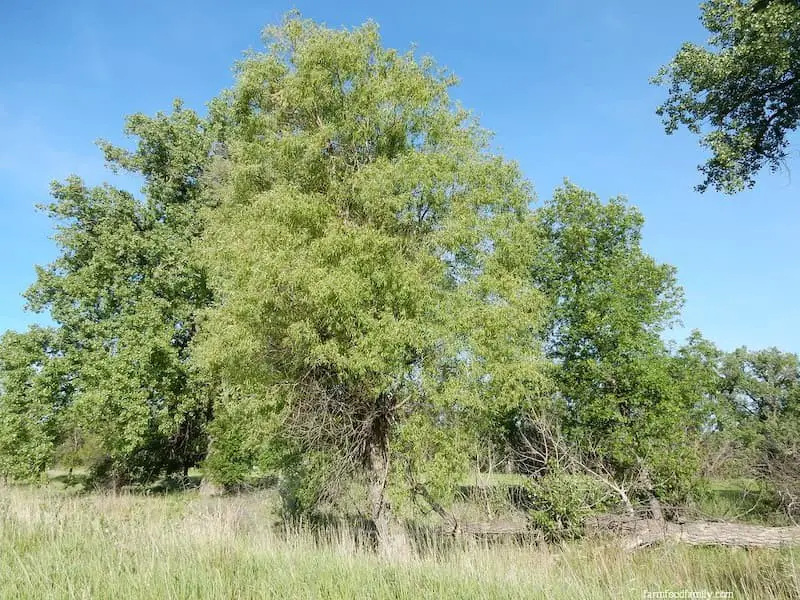
The medium-sized Willow tree, known for its peach-like leaves, can thrive from a single stem or multiple stems. Its growth habits vary, reaching between 13-90 feet tall with a spread of approximately 35 feet. The foliage is characterized by olive-green, narrow, lance-shaped leaves with finely serrated edges and white undersides. In the spring, the tree produces yellow-green catkins that are less fluffy than those found on Pussy Willows.
Native to Canada and the US, this species is often found in aquatic environments such as ponds, streams, and rivers.
Notably, these trees are fast-growing and can be planted en masse to fill vast landscapes. They also play a crucial role in soil erosion control, making them a valuable addition to any ecosystem.
Purple Osier Willow (Salix purpurea)
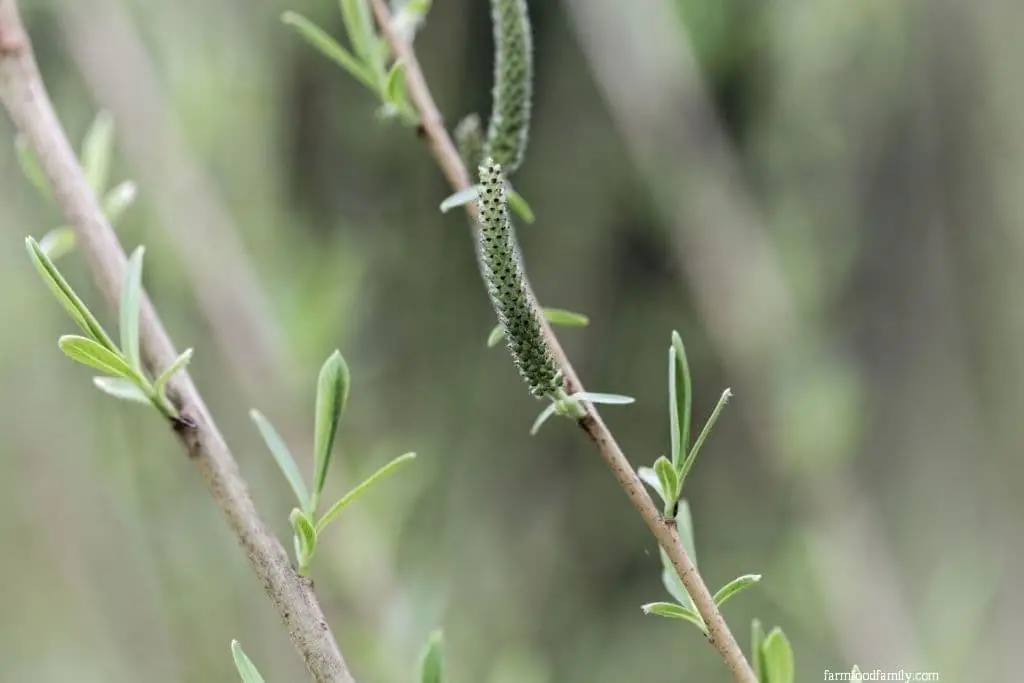
The purple willow’s unique characteristic lies in the deep purple hue of its youthful bark, which gradually transforms into dark grey as it matures. Its slender stature reaches a maximum height of 10-12ft, with a sprawling growth habit that showcases its typical weeping willow branching pattern. The leaves are long and narrow, boasting a glossy blue-green sheen.
In the spring, its catkins burst forth in vibrant red or purple hues, deviating from the typical yellow, white, or green coloration of their counterparts. This ornamental tree is often planted for hedging purposes and to combat erosion. Moreover, its bark holds significant medicinal value, specifically containing salicin – a natural pain reliever – which adds to its appeal as a versatile and valuable plant species.
Scouler’s Willow (Salix Scouleriana)
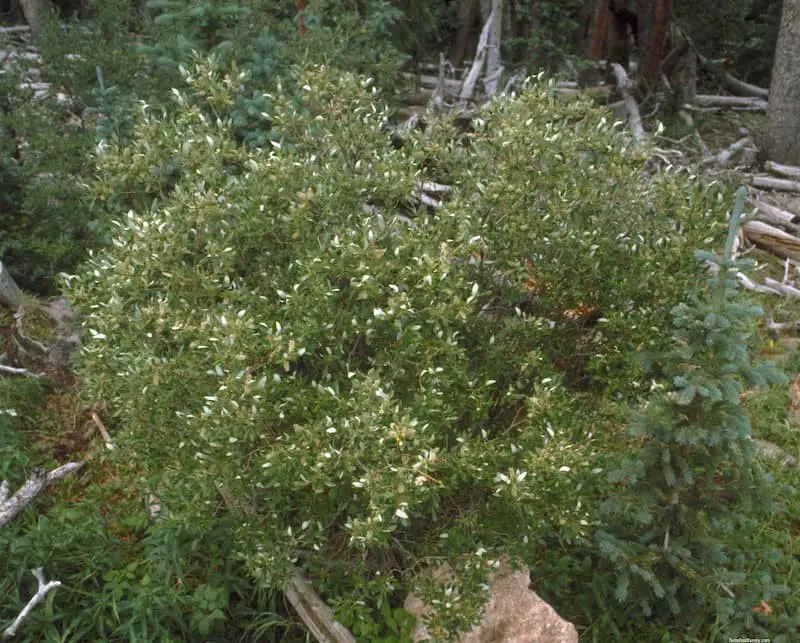
The Weeping Willow’s cousin, Salix scouleri, boasts cold hardiness and thrives in dry environments, making it a unique landscape choice. Its fibrous, dark brown stems grow upright, reaching a manageable 22ft in height. The shrub’s lancing leaves feature a pointed base, wavy margins, and a subtle blend of green and brown hues. Visual appeal is enhanced by its white catkins and hairy fruits.
While carving is the primary use for this willow, it also plays a vital role in preventing soil erosion, making it a popular choice for riverbanks and streams. Its name pays homage to John Scouler, the discoverer of this versatile shrub.
Weeping Willow (Salix babylonica)
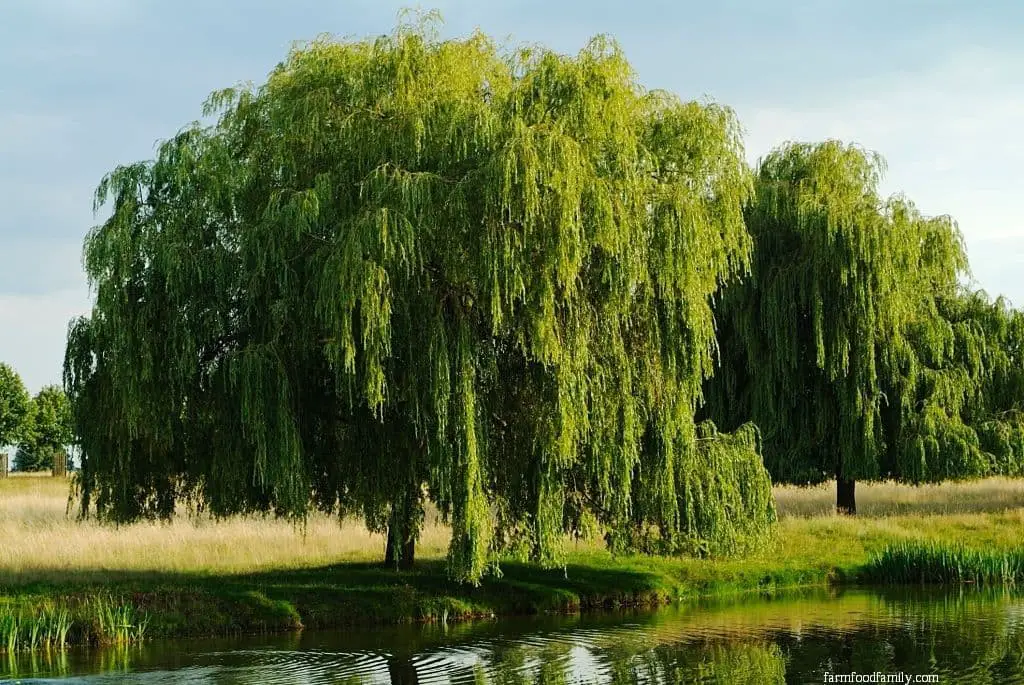
The Babylon weeping willow, also known as Salix babylonica, is perhaps the most recognizable willow species due to its striking pendulous habit. Native to China, this fast-growing tree can reach an impressive 80ft in height. Its slender leaves are typically a yellow-brown hue, but transform into vibrant yellows during the winter months. Spring brings forth buttery yellow blooms, adding another layer of beauty to its already striking appearance.
When planted in large landscapes or along pond and lake edges, this tree makes a stunning focal point. While its lifespan is relatively short-lived at around 30 years, its rapid growth rate of 10ft per year means it can quickly fill out a space. On windy days, the branches sway gently in the breeze, creating a mesmerizing display. It’s no wonder why this iconic willow tree has been featured prominently in films.
White Willow (Salix alba)
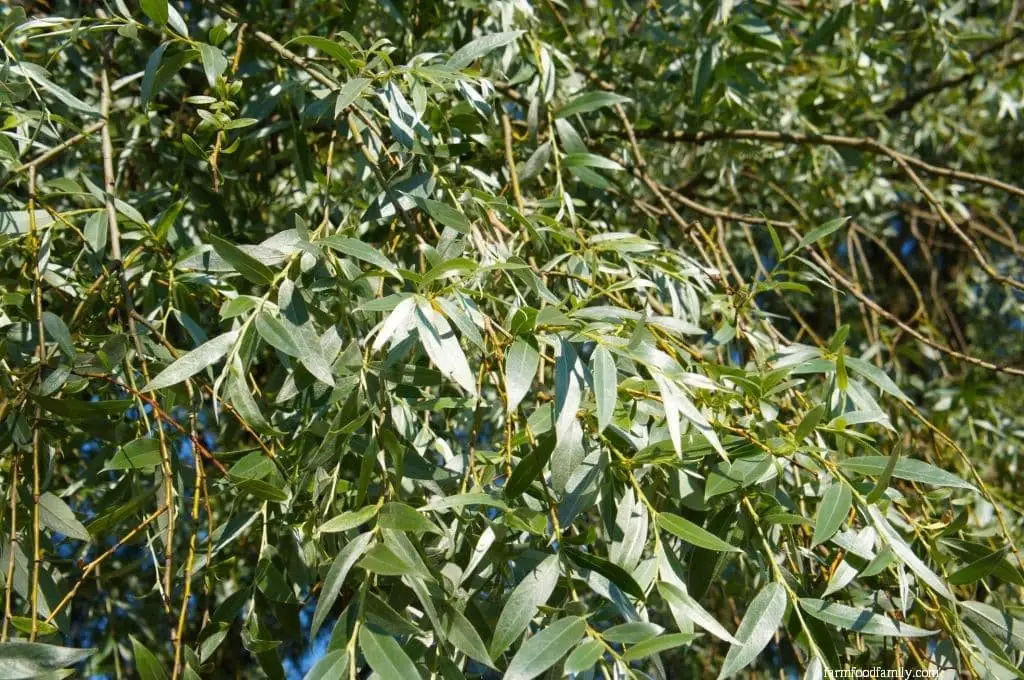
The Weeping Willow gets its name from the striking green leaves with white undersides that are reminiscent of the natural world. Its robust size may not make it an ideal choice for landscaping, however, due to the susceptibility to a willow fungus that gradually weakens the wood and creates a unique diamond-shaped pattern over time. The stems of this tree take on a yellowish to white hue as they droop in a dramatic, cascading manner.
The leaves themselves undergo a striking transformation, transitioning from bright green at the outset to dark green and eventually golden yellow as they mature. This fast-growing willow variety thrives in environments with ample water supply, typically growing between 50-100ft tall and utilizing its stems for purposes such as basketry. It is also known to colonize river and stream banks, as well as ponds, where it can reach remarkable heights.
Yellow Willow (Salix lutea)
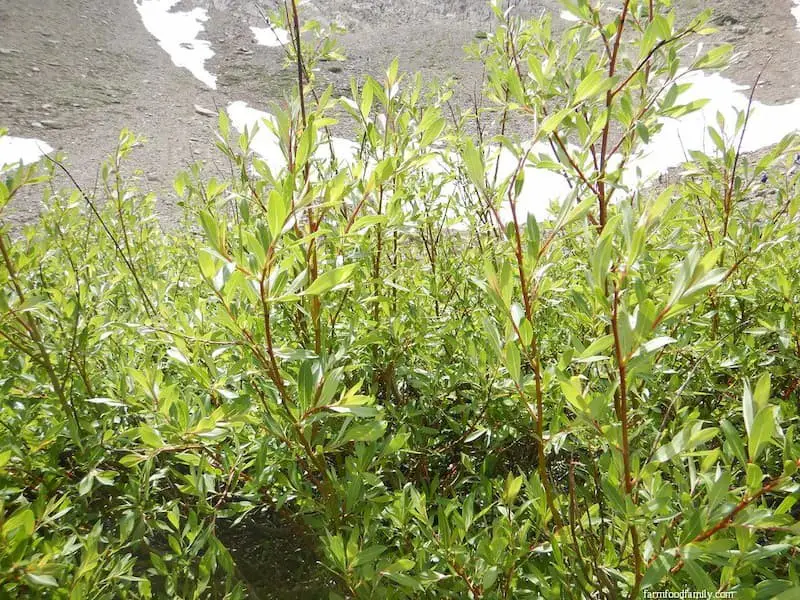
Nestled in the banks of North American lakes and streams, a striking native species thrives. Its leaves, a vibrant light green with a glossy sheen, display an ovate shape elongated by its alternating pattern. The stems take on a reddish hue, punctuated by bursts of yellow-green catkins in spring. This adaptable plant can grow up to 15-30 feet tall, expanding rapidly as it outcompetes erosion-prone areas along bodies of water, making it an ideal choice for ornamental landscaping.
How to grow and care for willow trees
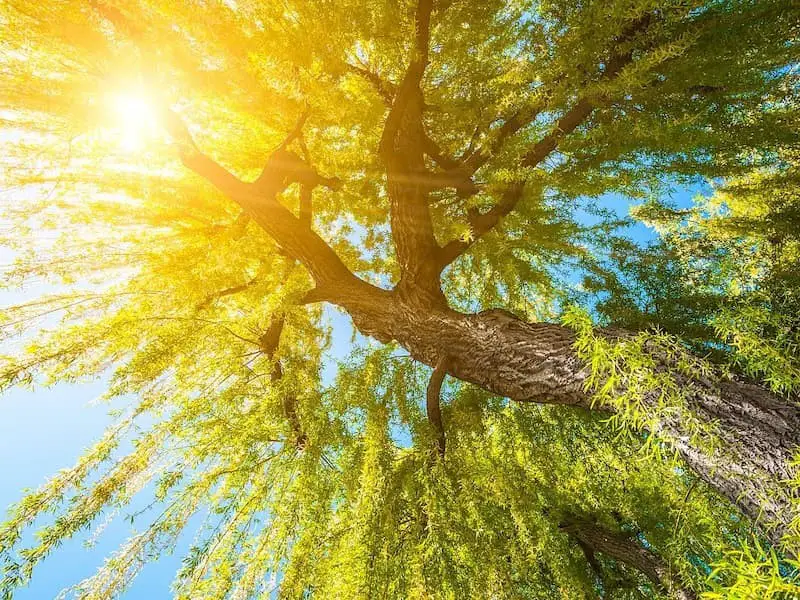
For a thriving willow tree, it’s essential to understand the fundamental requirements for growth and care. Here, we’ll delve into the key aspects you should know.
Sun and shade
When it comes to providing the right conditions for willow trees, one key factor is ensuring they receive sufficient sunlight. In fact, these beautiful plants require at least four hours of direct sunlight each day to thrive. This means positioning them in areas that offer a mix of full sun and partial shade, allowing them to bask in the warm rays when possible, while also providing some respite from intense heat.
Soil
The ideal environment for this tree is characterized by consistently damp, mildly acidic, and permeable soil conditions. While it can adapt to a wide range of soil types, it will truly flourish when these specific conditions are met.
Water
For newly planted willows, irrigation is a crucial aspect of their growth during the initial 12 months. Specifically, they require regular watering sessions, spaced at weekly intervals. However, once the young sapling has successfully developed its root system and established itself in the soil, it becomes more resilient and only needs to be watered when the soil moisture drops to a critically low level.
Fertilizer
While willows don’t typically demand fertilization, there are instances where a boost might be beneficial. If you notice the foliage starting to wilt or turn yellow, consider providing a balanced fertilizer in the spring season. A 20-20-20 formula can be an effective solution to revive your willow’s health.
Pruning
As a willow’s youthful period comes to an end, it necessitates regular pruning to establish a strong foundation. Once this phase has passed, maintenance pruning should be performed during the late winter or early spring seasons to ensure the tree retains its desired shape and structure.
Where do willow trees grow?
Throughout their natural habitats, willow trees thrive in environments with moist soil and ample sunlight. These adaptable species are widespread across temperate regions, boasting presence in diverse parts of North America, Asia, and Europe.
How fast do willow trees grow?
While willow trees are known for their rapid growth, with some species growing up to 10 feet in height annually, their life expectancy is somewhat limited compared to other tree varieties.
Do willow trees have flowers?
While commonly referred to as flowers or sprays, these curious structures are actually called catkins. As the seasons transition into spring, many species of willow trees burst forth with an array of colorful furls, ranging from soft greens and yellows to vibrant whites. Some notable varieties like pussy willows and purple willows take it a step further, presenting striking red, pink, and purple hues, adding a pop of color to the budding landscape.
Do willow trees lose their leaves?
As the seasons transition, willow trees undergo a natural process of shedding their leaves from late fall to early winter. This phenomenon marks the beginning of a new cycle, as the tree’s foliage regenerates in the spring with a greater density than before.
What are willow trees good for?
Willow trees are incredibly versatile and offer a multitude of benefits. Not only do they make for stunning ornamental landscaping features, but they can also be used to create beautiful hedges, live privacy screens, and borders that add texture and interest to any yard or garden. Additionally, willows are naturally adept at controlling soil erosion, making them an excellent choice for areas prone to landslides or water runoff.
Beyond their aesthetic appeal, willow trees have a range of practical uses as well. The bark can be used in basket-making and carving, while the leaves and other parts of the plant are valued for their medicinal properties. For instance, willows have been traditionally used to alleviate pain, relieve symptoms of hay fever, and even treat respiratory diseases.
Furthermore, willow trees play a crucial role in the honey industry as a source of nectar, which is harvested by bees to produce honey. And, for those looking for alternative sources of flour, certain types of willows can be used to produce edible flours.
Hybrid willow trees problems
While willows are often touted as a low-maintenance and versatile tree option, even hybrid varieties are not immune to certain issues. Here’s a rundown of some common problems you might encounter with your hybrid willow trees: From scabs that can form black cankers to blights, fungi, powdery mildew, root rots, borers, aphids, and even gypsy moths, it’s essential to stay vigilant for these potential pitfalls.
Can you grow a willow tree from a branch?
Willow tree propagation is a multi-faceted process that allows for the creation of new trees through various methods. One approach involves using branch cuttings, where a healthy section of stem is excised and planted in a well-draining medium, requiring regular watering to facilitate root establishment. Alternatively, pollination can be used to foster new growth, although this method may prove more challenging.
For those looking to start from scratch, planting willow seeds provides another viable option. Regardless of the chosen approach, frequent watering will be essential during the propagation process and until the new roots are fully established.
Should I plant a weeping willow in my yard?
With a large yard, consider incorporating this versatile plant as a filler option. Not only does it provide ornamental value for hedges and borders, but its dense foliage can also be used to screen out unwanted views or define outdoor spaces. However, keep in mind that its aggressive root system means you’ll need to leave sufficient space between individual plants if you plan to combine it with other species.
Where to buy willow trees?
When searching for willow tree seeds, seedlings, or cuttings, local nurseries are a great place to start. You can expect to find these willow tree products at various stores near you. Here’s a list of some notable retailers where you might be able to score your ideal willow tree: Willow Green Acres, BigFoot Willow, The Tree Center, TNN Nursery, Arbor Day, Nature Hills, Amazon, Garden Goods Direct, Planting Tree, and Bower and Branch.
Additionally, if you’re interested in learning more about other types of trees, you can explore related articles on the blog, covering topics such as cherry trees, elm trees, cedar trees, redbud trees, and pine trees.
Related Posts
Discovering the vast array of online plant nurseries, one is struck by the sheer variety of tree species available. From the familiar apple trees to evergreens like pines and spruces, each has its unique characteristics and requirements. For those passionate about tree care, a career as an arborist may be a fulfilling path. In this context, understanding the impact of trees on property value becomes crucial.
Trees can dramatically boost a home’s appeal, but conversely, removing them can also have a significant effect. When it comes to specific plant species, the lady palm (Rhapis excelsa) is a popular choice for its low-maintenance and adaptable nature. Meanwhile, organic blueberry plants require careful attention to thrive in the garden.


